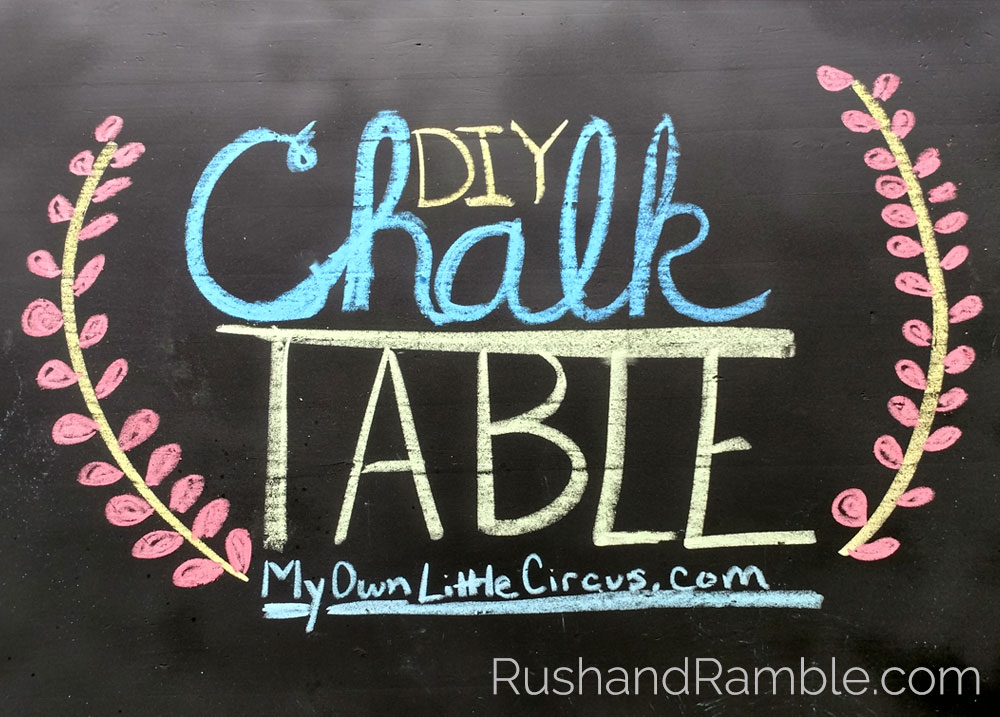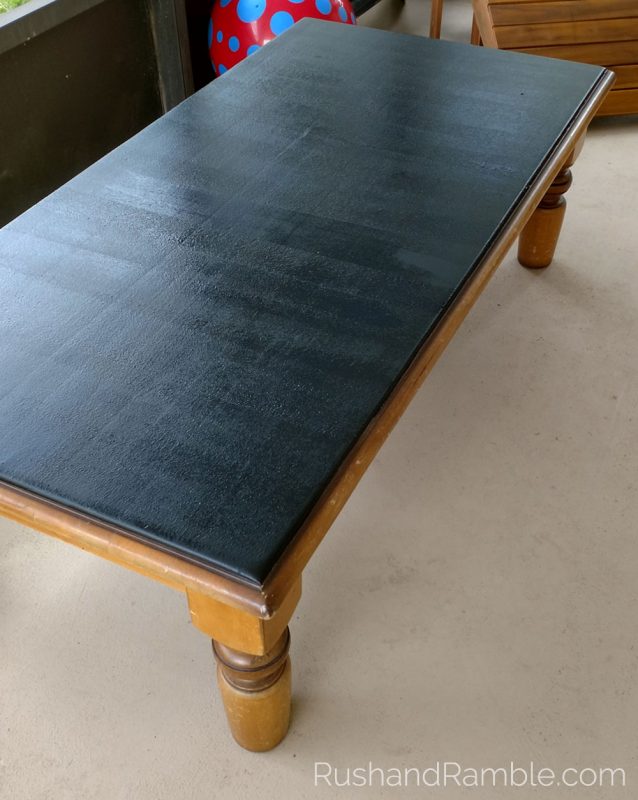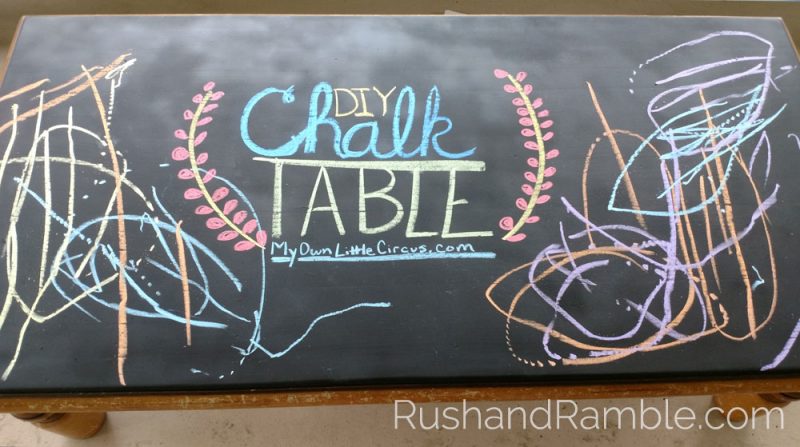The DIY Chalkboard Table That Was Never Meant To Be

DIY chalkboard paint crafts are everywhere these days. It’s no wonder why they are so popular. Chalkboard paint promises to turn any surface into a fun or functional workspace. Whether you’re making a craft area for kids, a shopping list on a kitchen wall, or family task list for around the home, it’s a versatile tool. Or at least that’s the theory. I recently decided to finally give chalkboard paint a try on this DIY Chalkboard Table.
The Table
A few years, back I picked up a coffee table at Goodwill. It was a great find. The table was solid wood, giving it a very sturdy build. It had some wear and a few dings, but in rather good shape. Fast forward a couple years and we started replacing some of our furniture with nicer pieces. The coffee table was replaced with a beautiful cherry wood coffee table courtesy of one of my former co-workers. This left us with two coffee tables. While the Goodwill table had some nicks and dings, it was still in pretty good shape. I couldn’t bring myself to just get rid of it. It’s too hard to find solid wood furniture these days, so I couldn’t let it go. Along the way it was moved from one room to another and eventually found its new home on our back patio. The patio is screened in and has a solid roof, providing some protection from the elements. Even with that bit of protection, over time, the finish deteriorated.
The glossy finish gave way to a rough, dull, and exposed surface. I didn’t want the elements to completely destroy the table, so I decided it was time to refinish the table. I considered sanding it down and applying a new coat of polyurethane. I also considered stenciling on a fun design but decided to give chalkboard paint to try instead. I lightly sanded off what remained of the initial finish and set to work.
Brush-On Latex Chalkboard Paint
First, I tried using Valspar Black Latex Chalkboard Paint from Lowe’s. It promised to work “On All Surfaces—Metal, Plastic, Wood & More.” I applied the paint with a project size roller brush and followed all the instructions for a full cure time. The finish didn’t seem quite right and, sure enough, when I tested it with a piece of chalk it started scratching and peeling off. The paint peeled off in large chunks, leaving behind bits and pieces of stuck-on paint. Those little bits were stubborn and didn’t want to sand off, so I ended up peeling them off one tiny little fleck of paint at a time.

This was a tedious and messy process that left bits and pieces of latex paint all over the place. Eventually I was able to get all the paint off the table. I figured this had to be a fluke. So many people rave about how amazing chalkboard paint is, I wasn’t ready to call it quits just yet.
Spray-On Oil-Based Chalkboard Paint
Next, I tried Valspar Black Oil-Based Chalkboard Paint, also from Lowe’s. This is definitely a more expensive option with much thinner coverage. It took two cans to cover the tabletop. The resulting finish was overly gritty and inconsistent. After the pain had fully cured, I wiped it down with a rag to clean up all the loose bits of chalkboard dust. Thankfully, this finish stuck and worked great with chalk. Or so I thought. I ended up with some nearly Pinterest-worthy pictures of beautiful new chalkboard table. But if only it ended there.

The “Nailed It” Finish
Despite the new finish looking a little nicer, it still wasn’t right. The chalk is next to impossible to clean off. You can’t wipe it off with an eraser or paper towel or anything else for that matter. The only way to get the chalk off the chalkboard table is with water. It’s not a huge problem but it makes it very inconvenient and unnecessarily messy to clean off. Not what I had in mind when I was making this table for my son to play with on the patio.

Don’t get me wrong, it does work, just not the way I feel it should. I’ve tried a few different types of chalk to make sure the chalk isn’t the problem. No matter what brand or type of chalk I use, it causes the same problem. Now I’m left with a black top table that only kind of works.
On the bright side, at least as far as my husband will be concerned, this means we’ll end up buying a sanding tool to remove the finish (I am NOT sanding it down by hand for a third time) and try to save the table one more time.
I’ve heard so many great things about chalkboard paint, I was sorely disappointed when this didn’t work out. I’m not sure if it was an issue with the brand of paint, the application, or some other problem but I’m calling it quits on the chalkboard front. At least for now.
Have you ever use chalkboard paint? What type of paint did you use and what tips or tricks can you share?
